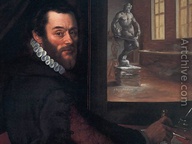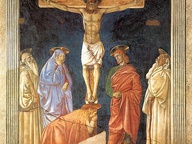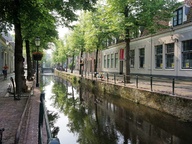A sweet life? From the Liberty to the italian design. 1900-1940
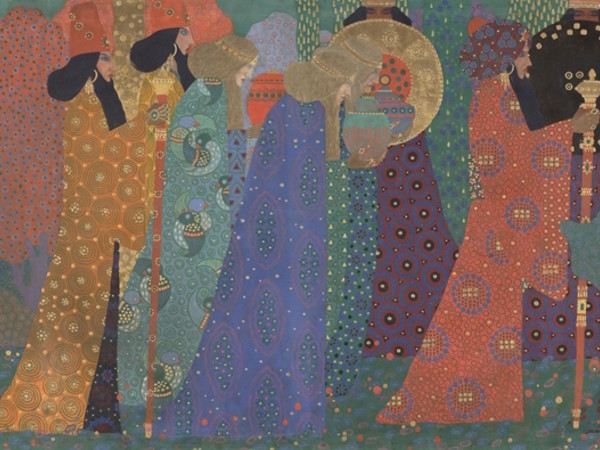
© Musée d'Orsay / Ph. ADAGP, Paris | Vittorio Zecchin, Le mille e una notte, 1914 ca. Parigi, Musée d’Orsay, achat par l'Etablissement public administratif du musée d'Orsay avec la participation d'une donation anonyme canadienne en 2012
From 16 Ottobre 2015 to 17 Gennaio 2016
Rome
Place: Palazzo delle Esposizioni
Address: via Nazionale 194
Responsibles: Guy Gogeval, Beatrice Avanzi, Irene de Guttry, Maria Paola Maino
Ticket price: full € 12,50, reduced € 10, reduced 7/18 yrs. € 6, free under 6 yrs., students € 4
Telefono per informazioni: +39 06 3996 7500
E-Mail info: info.pde@palaexpo.it
Official site: http://www.palazzoesposizioni.it
Heirs to a great tradition in art and craftsmanship, the decorative arts in early 20th century Italy reflected the people's desire to see the march of progress in a country that had only recently been united. Cabinet makers, potters and master glaziers often worked hand in hand with the leading artists of the day, eventually producing a fully-fledged "Italian style" which was to have a major impact on the birth of modern design. This was a time of "paradoxical optimism", of intense creativity against the backdrop of a society experiencing deep and far-reaching changes, initially fuelled by the hopes aroused by the Giolitti government but soon forced to suffer the trauma of the Great War and the resulting tragedy of Mussolini's Fascist Regime.
In exploring this era, the exhibition follows a chronological path consisting of over a hundred exhibits in a constant interplay between the decorative and the plastic arts. The early 20th century saw the triumph of Art Nouveau, which was to become known in Italy as the "Liberty style" or "floral style". Following the International Exhibition of Decorative Arts in Turin in 1902, the Liberty style gradually began to take on an idiosyncratic personality of its own in the work of such artists as Carlo Bugatti, Galileo Chini, Eugenio Quarti, Ernesto Basile and Carlo Zen. Their propensity for curving lines inspired by the forms of nature, with an occasionally exotic undertone, is linked to the work of the Divisionist painters, who were close to the Symbolist trend common to the whole of Europe and whose style is represented in the exhibition by the work of such painters as Previati, Segantini, Morbelli and Pellizza da Volpedo.
The Liberty style, which became the chosen style of the rising middle class, was soon forced to reckon with Futurism and its loathing for the past. This avant-garde movement, which first sprang from the fertile imagination of Tommaso Marinetti in 1909, was only to spread to the realm of the decorative arts after the Great War, during the so-called "Second Futurist" phase. In 1915, Giacomo Balla and Fortunato Depero penned a manifesto entitled "The Futurist Reconstruction of the Universe", in which they announced their intention to extend the Futurist aesthetic to every aspect of art and life. These two artists, who claimed to want to rebuild the entire universe in order "to make it a joyful place", were to produce countless items of decorative art and everyday use, ranging from furniture and clothing to tapestries and toys.
During the years of the "Return to Order" - which followed the avant-garde season throughout Europe - the rediscovery of Classical culture developed along a number of different paths in the realm of the plastic and decorative arts in Italy. The most interesting developments included the Metaphysical Art of De Chirico and Savinio, and the Magical Realism trend whose greatest exponent was Felice Casorati. Similarly, the ceramics of Giò Ponti and the initial creations of Carlo Scarpa in glass were imbued with an echanted vision suspended between the Classical style and a taste for Art Déco. In the fields of architecture and interior decoration, the monumental style favoured by Giovanni Muzio and Piero Portaluppi reflected the return to Classicism celebrated by the "Novecento", a movement sponsored by Margherita Sarfatti that was fated to become the style officially adopted by the Fascist Regime.
In those early years, however, the regime also proved capable of opening up to the modernist experimentation of such architects as Giuseppe Terragni and Mario Radice (the designers of the famous Casa del Fascio in Como), whose work shares an affinity with the Abstract art of Fontana, Melotti and Licini. And lastly, in the realm of the applied arts, the Rationalist style, reflecting the European inclinations of such artists as Albini, Baldessari, Figini and Pollini, marked the transition towards industrial production and design as we understand it today.
In exploring this era, the exhibition follows a chronological path consisting of over a hundred exhibits in a constant interplay between the decorative and the plastic arts. The early 20th century saw the triumph of Art Nouveau, which was to become known in Italy as the "Liberty style" or "floral style". Following the International Exhibition of Decorative Arts in Turin in 1902, the Liberty style gradually began to take on an idiosyncratic personality of its own in the work of such artists as Carlo Bugatti, Galileo Chini, Eugenio Quarti, Ernesto Basile and Carlo Zen. Their propensity for curving lines inspired by the forms of nature, with an occasionally exotic undertone, is linked to the work of the Divisionist painters, who were close to the Symbolist trend common to the whole of Europe and whose style is represented in the exhibition by the work of such painters as Previati, Segantini, Morbelli and Pellizza da Volpedo.
The Liberty style, which became the chosen style of the rising middle class, was soon forced to reckon with Futurism and its loathing for the past. This avant-garde movement, which first sprang from the fertile imagination of Tommaso Marinetti in 1909, was only to spread to the realm of the decorative arts after the Great War, during the so-called "Second Futurist" phase. In 1915, Giacomo Balla and Fortunato Depero penned a manifesto entitled "The Futurist Reconstruction of the Universe", in which they announced their intention to extend the Futurist aesthetic to every aspect of art and life. These two artists, who claimed to want to rebuild the entire universe in order "to make it a joyful place", were to produce countless items of decorative art and everyday use, ranging from furniture and clothing to tapestries and toys.
During the years of the "Return to Order" - which followed the avant-garde season throughout Europe - the rediscovery of Classical culture developed along a number of different paths in the realm of the plastic and decorative arts in Italy. The most interesting developments included the Metaphysical Art of De Chirico and Savinio, and the Magical Realism trend whose greatest exponent was Felice Casorati. Similarly, the ceramics of Giò Ponti and the initial creations of Carlo Scarpa in glass were imbued with an echanted vision suspended between the Classical style and a taste for Art Déco. In the fields of architecture and interior decoration, the monumental style favoured by Giovanni Muzio and Piero Portaluppi reflected the return to Classicism celebrated by the "Novecento", a movement sponsored by Margherita Sarfatti that was fated to become the style officially adopted by the Fascist Regime.
In those early years, however, the regime also proved capable of opening up to the modernist experimentation of such architects as Giuseppe Terragni and Mario Radice (the designers of the famous Casa del Fascio in Como), whose work shares an affinity with the Abstract art of Fontana, Melotti and Licini. And lastly, in the realm of the applied arts, the Rationalist style, reflecting the European inclinations of such artists as Albini, Baldessari, Figini and Pollini, marked the transition towards industrial production and design as we understand it today.
SCARICA IL COMUNICATO IN PDF
pellizza da volpedo ·
giacomo balla ·
morbelli ·
galileo chini ·
de chirico ·
felice casorati ·
carlo scarpa ·
segantini ·
fortunato depero ·
previati ·
savinio ·
gi ponti ·
giuseppe terragni ·
giovanni muzio ·
piero portaluppi ·
carlo bugatti ·
eugenio quarti ·
ernesto basile ·
carlo zen ·
mario radice and oth
COMMENTI

-
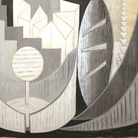 Dal 08 maggio 2024 al 15 settembre 2024
Roma | Museo Carlo Bilotti Aranciera di Villa Borghese
Dal 08 maggio 2024 al 15 settembre 2024
Roma | Museo Carlo Bilotti Aranciera di Villa Borghese
-
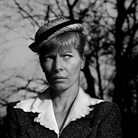 Dal 08 maggio 2024 al 19 maggio 2024
Roma | MAXXI Museo nazionale delle arti del XXI secolo
Dal 08 maggio 2024 al 19 maggio 2024
Roma | MAXXI Museo nazionale delle arti del XXI secolo
-
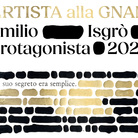 Dal 08 maggio 2024 al 31 dicembre 2024
Roma | Galleria Nazionale d’Arte Moderna e Contemporanea
Dal 08 maggio 2024 al 31 dicembre 2024
Roma | Galleria Nazionale d’Arte Moderna e Contemporanea
-
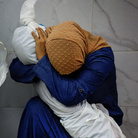 Dal 08 maggio 2024 al 09 giugno 2024
Roma | Palazzo Esposizioni
Dal 08 maggio 2024 al 09 giugno 2024
Roma | Palazzo Esposizioni
-
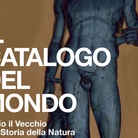 Dal 03 maggio 2024 al 31 agosto 2024
Como | Ex Chiesa di San Pietro in Atrio e Palazzo del Broletto
Dal 03 maggio 2024 al 31 agosto 2024
Como | Ex Chiesa di San Pietro in Atrio e Palazzo del Broletto
-
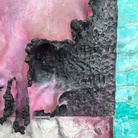 Dal 03 maggio 2024 al 14 luglio 2024
Pisa | Palazzo Blu
Dal 03 maggio 2024 al 14 luglio 2024
Pisa | Palazzo Blu

